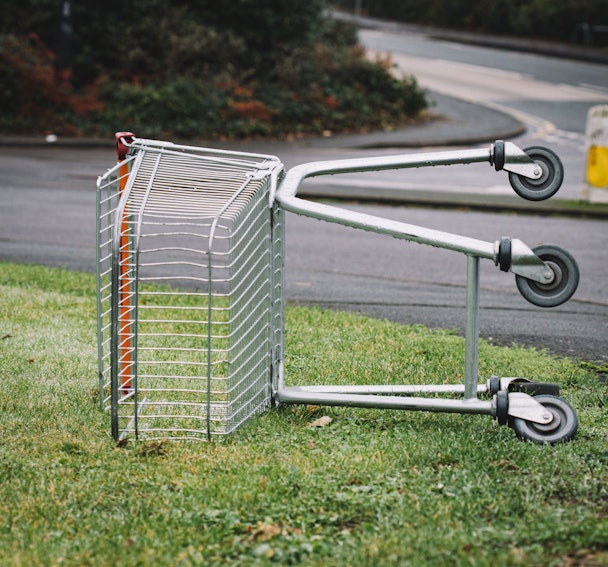Nielsen data shows how consumers around globe have begun behaving alike
Consumer behavior has been wildly consistent across the globe since January according to Scott McKenzie, the global head of Nielsen’s intelligence unit. He tells us about the impact of Covid-19 on spending habits and shares the macro trends permanently shaping the marketplace.

As people recalibrate against what's in their wallet, they’ll recalibrate what goes into their shopping carts.
When it comes to spending, this is one of the few times in history when much of the global consumer population is behaving alike. At first, it was consistency in how consumers responded to the news cycle around Covid-19. News events were the early common triggers for panic buying and stockpiling. But as people were forced into lockdowns and became used to cooking more at home and entertaining themselves in their homes, they told us that they’d keep those habits up once the threat of Covid had moved on.
We asked them these questions over and over again in dozens of countries and the general sentiment was that the homebody habit would stick. Of course, what people say they will do is one thing and doing it is another. But again, consistency in behavior began to emerge.
Home is where the stomach is
We saw that people were putting their money where their mouths were. Our sales data began to reflect higher levels of purchase around products that kept people closer to home: more fresh meat, more frozen vegetables and more alcohol as they steered clear of bars and restaurants, even as they opened up.
And, for now, those elevated levels remain solid in most countries. In fact, in the US, overall consumer packaged goods (CPG) sales remain well above that of a year ago, up 12% in the four weeks ending June 20. For US food and beverages in particular, sales growth (also in the four weeks ending June 20) alone ($6.8bn) have totaled the equivalent of half the CPG food dollar growth witnessed across the entire 2019 calendar year ($13.7bn).
Efficacy and origin are top of mind
Consumer expectations around the things they buy are also quickly evolving. There are some fundamentals shining through. A big one is around efficacy. In other words, does the product do its job? Brand claims on cleaning products make for an easy example. Consumers want to know that the product kills germs. Period. Right now, they’re less concerned about saving the planet and more concerned about saving their families.
Making those product claims clear is front and center for many manufacturers right now as they look for ways to help consumers make fast decisions as they race to get in and out of supermarkets. That being said, it is hardly surprising that foods known for or claiming to support immune system health have delivered a 13% US sales spike in the latest four weeks and a 19% uptick in sales across the 12-week period ending June 20.
For food manufacturers, recalibration is also underway. Consumers are increasingly interested in local products or supply chains that are short and transparent. Understanding what you’re eating and where it comes from has been a growing trend for several years, but Covid-19 has intensified demand from consumers on this front.
Online purchase behavior becomes indelible
If what we’re buying is changing, so too is where we’re buying it. In the offline world, we’re generally shopping less often but stocking up more when we do – a reflection of people trying to mitigate exposure in physical store visits. But in parallel, online shopping for our groceries has accelerated to reach levels that in normal circumstances would have taken years.
A longstanding barrier to entry for would-be online shoppers was their reluctance to buy fresh produce online. But the reduced number of physical shopping trips appears to have forced people’s hands. Interestingly, those new online shoppers are sticking around in large numbers, many of them coming from older shoppers who had avoided the channel to this point. Between March and April of this year, we’ve already seen 30% of new online buyers repeat their online purchase habit and a third (33%) of new online CPG buyers were from the 55 and over age group.
Brace yourselves for recessionary buying habits
For retailers, this almost overnight shift to higher online penetration will mean they need to focus on the channel in new ways. Online shoppers have been less profitable than brick and mortar shoppers for many supermarkets with the costs of fulfillment and inventory management eating into profit. But in some countries, the wider adoption of online will improve levels of profitability and see retailers more fully embrace online expansion.
Part of that work in online platforms will also be about addressing what will be years of constantly recalibrating demand in all retail channels as the inevitable recessionary impact changes price sensitivities, brand choices and pack sizes.
As people recalibrate against what is in their wallet, they’ll necessarily need to recalibrate what goes into their shopping baskets.
Word of the day: recalibrate.
Scott McKenzie is the global head of Nielsen’s intelligence unit.
To keep up with all our dedicated US coverage, sign up for the free daily briefing newsletter.
